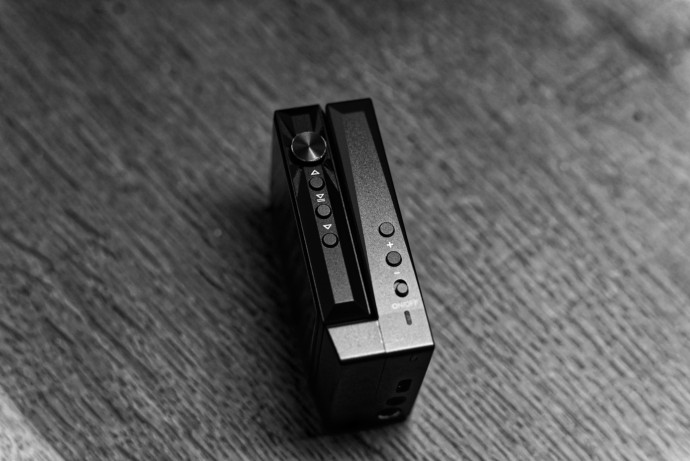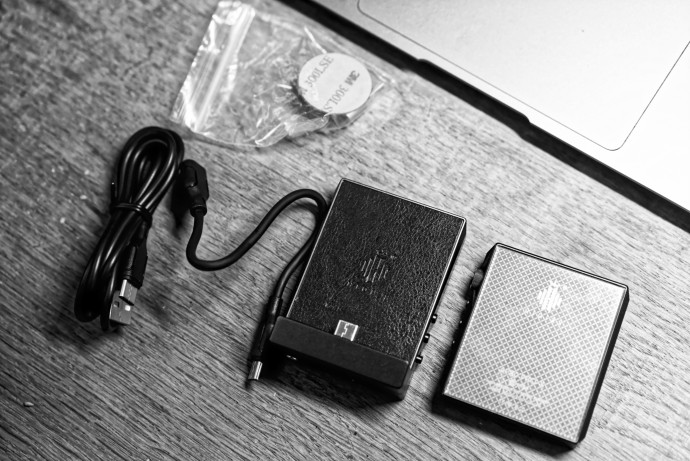In this article we review the Hidizs DH80, the latest dual-chip DAC/AMP from Hidizs, available for just €/$139 Euro/USD.
Disclaimer: the Hidizs DH80 was sent to us, free of charge, by the brand in exchange for our honest opinion.
About Hidizs
Founded in 2009 by Tamson Tan, Hidizs offers a full range of DAP, DAC/Amp, and IEMs that share the same DNA: good sound for an affordable price. And if their first model, the AP100, was one of the quirkiest/haunted devices I ever held in my life, it remained a solid alternative to FiiO’s or Shanling’s players, for a lesser price.
Then, for their second-generation player, the AP200, the brand decided to launch a Kickstarter, which appeared to be quite successful as Hidizs managed to raise no less than $280,000, with 943 backers. A great success that pushed the brand in a whole new direction, where each new product was crowdfunded: AP80, MS5, or the new S3Pro.

All that led to a complete overhaul of their range, reinforced by the chip shortage. And today, the best-seller of the brand isn’t a premium player like the DX320, or the M11 Plus ESS. No, Hidizs chose a completely different strategy and aimed for… the sub-$200 DAP, with the surprisingly good AP80 Pro-X.
A player that we reviewed a few weeks ago now. But, we didn’t have the chance to pair it with the Hidizs DH80, an additional DAC/Amp tailored for the player, that promises “Advanced Configuration Improves Sound Quality”, with the AP80 Pro-X.
So, today… is the day: time to check on that new DH80.

Design & Build Quality
Casing
What a quirky device the Hidizs DH80 is! This was my first thought when I took the Hidizs DH80 out of the box. Take a DAC with a slab-like design, add an USB-C dock at the bottom, some leather on the inner side, and top that with some controls over the edges, and you get the idea.
End to end, the DH80 is a bit longer than the AP80, but it’s as wide and as thick. The exact numbers are 70×50×12mm – if you don’t take account of the dock part, which doubles the thickness. Not a big box, but quite bigger than the USB Dongles I’ve been testing during the last weeks, such as the FiiO KA1, or more recently, the iBasso DC06.
Still, for the price, this remains a solid piece of work, rugged enough for a daily commuter that needs a spare DAC/AMP on the go. The two-part design feels pretty solid and if this isn’t a completely flush design, engineering-wise, it’s very interesting. Of course, if you pair it with the AP80 Pro-X, it’s a different story, as the whole bundle feels equally impressive… and flimsy. But more on that later.

Build Quality
Build quality is very good, but I have to confess that I’m not entirely sure of the fake leather cover. Sure, it’s a great choice for a pairing device, as the Hidizs DH80 won’t scratch the AP80 Pro-X each time you install/remove the player, but the touch is a bit… uncanny. That said, I asked a few friends for their opinion, and everyone – but for me – was pleased by this design – so it might just be my taste.
Apart from that, the device is almost flawless:
- blue anodized,
- CNC-milled aluminum body,
- screw-less design with dual-socket (3.5mm + 4.4mm Pentaconn)
- dual USB-C (one for the charge, one for the Data)

And, leather aside, everything looks and feels nice to touch and hold, like the AP80. It’s a completely different beast compared to the iBasso DC06 or FiiO KA3, which are pocket tanks, but some may prefer the smooth design of the DH80. Again, personal taste!
All in all, it’s a very solid piece of work, and it really gives a good first impression.
Bundle
Quick work on the bundle: it’s not often that I say it nowadays, but it’s quite impressive! In the box you get:
- an USB-C to USB-A cable
- an USB-C to USB-A adapter
- an USB-C to USB-C female cable
The latter comes as a big surprise and allows you to plug the DH80 into virtually any source. I tried it on my computer, the iPad, and even my Steam Deck, all worked flawlessly!

Comfort and Specifications
Pairing the Hidizs DH80 with the AP80 Pro-X
Adding the DH80 to the AP80 is simple “comme bonjour”:
- you pick the DAP,
- you push it onto the USB-C port of the DAC,
- turn the AP80 on,
- turn the DH80 on,
- a message will prompt, confirming the connection… and you’re good to go!

The duo is a bit strange at first, with a science-fair vibe mixed with a real audiophile touch. It feels like a power-house, with buttons neatly placed at all the right positions, but move it a bit too hard and the AP80 Pro-X will simply fly away.
Luckily, there’s a small adhesive in the package, made to match and ensure a perfect combination of the two devices. Proof that no matter how good your engineers are, the best solution will ALWAYS be tapered tape. Always.
Bonus point: if you plug the AP80 Pro-X into the Hidizs DH80, then plug an USB cable into the power port of the DH80, both devices will charge. Neat feature!

Daily use
On the go, the setup feels a tad awkward to use, but isn’t thicker than your usual phone+DAC combo. That said, compared to the Khadas Tea, which is insanely thin, the AP80 Pro-X + DH80 looks odd and far more audiophile than geeky.
Fortunately, the Hidizs DH80 offers some ergonomic improvements to the AP80. First and foremost, you get clicky volume buttons that I found much easier to control than the volume wheel. Moreover, the DAC adds a three-step gain selector (L/M/H) to fine-tune the power output, and a 4.4mm Pentaconn output instead of the 2.5mm found on the AP80.
When connected to a more traditional source, like a computer or a smartphone, the volume buttons come in very handy. A feature that I miss in many, if not all, modern USB-DAC. But, that’s pretty common. Last but not least, you can spot a LED ring at the bottom side, indicating the current sampling rates:
- red for 44.1 kHz / 48 kHz
- blue for 88.2 kHz / 384 kHz
- pink for MQA
Let’s take a quick look at the specs now.

Specifications
Like the Hidizs AP80 Pro-X we reviewed recently or the new iBasso DC06, at the heart of the DH80, you’ll find an ESS chip, a 9281C more specifically. A great chip, packing a 32-bit stereo Low Power DAC and a headphone amplifier, paired with a dual set of RT6863C op-amp that seems, on paper at least, able to deliver up to 4 Vrms through the balanced output.
In essence, this chip is designed for audiophile-grade portable power sources, like a DAP, or a DAC, so it’s no surprise that you’ll find every latest technology the brand has to offer :
- 32-bit HyperStream III DAC/HPA, for high dynamic range and ultra-low distortion
- Quad DAC technology, that allows manufacturers to create balanced circuitry with a single chip
- Time-domain Jitter Eliminator, everything is the name: no input clock jitter
- up to 32bit / 384kHz PCM and DSD256 support
- ultra-low standby power, extremely useful for an USB-powered DAC
- 64-bit accumulator and 32-bit processor

To that, Hidizs added its own “sauce”, to enable the full potential of the DAC, and furthermore, output more power with a lower floor noise. So, upstream of the 9281C chip, the brand added its own USB-receiver chip, combined with two crystal oscillators, for bit-perfect rendering. On top of that, the power supply gets 4 Panasonic capacitors, driven by a 1300mAh battery, for enhanced voltage swing – as we’ll see later on.
Finally, for the nerds out there – like me- here are the full specs.
Technical specs
- Type: USB DAC / Dock
- Model: Hidizs AP80 Pro-X
- Chipset: ESS Sabre ES9281C
- Frequency range: 20 – 20 000Hz
- Compatibility: PCM up to 32bit/384kHz – DSD up to DSD128 – MQA 16x
- SNR: 116db
- Crosstalk (4.4mm / 3.5mm): 108dB / 79dB
- THD: (4.4mm / 3.5mm ): 0.0004% / 0.0006%
- Size: 70×50×12mm
- Weight: 82.3g
- Battery: 1300mAh
- Socket: USB-C
- Price: $139 / €139
The article continues on Page Two, after the click here








David
The price was so affordable it wasn’t worth mentioning, nor how it compares to any other similar product. Excellent!
Lieven
Price is in the first sentence of the article. Excellent reading!
DG
When using the AP80 Pro with the DH80 can the volume wheel on the AP80 Pro still be used to control volume or does volume have to be controlled with the buttons on the HD80?